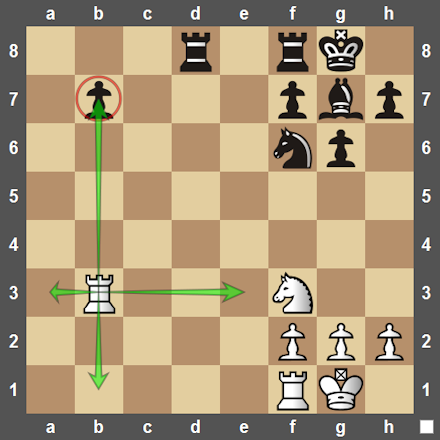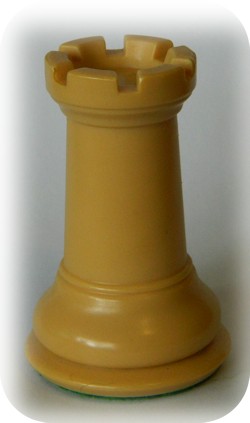The Rook

The Rook
At the beginning of the game, the White rooks will be on the a1-square and the h1-square. The Black rooks will be on the a8-square and the h8-square.
The rook is the 2nd most powerful piece on the chessboard, next to the queen. The rook moves to any square on the file or rank on which it stands. When the rook is on an empty board he can move to one of 14 squares (See Figure 1).
The range of the rook (like the queen) is limited by the edge of the board and any pieces that may be in the way. In the case of a friendly piece, the rook must stop on a square before it reaches the friendly piece (see Figure 2). In the case of capturing, he moves to the square occupied by the opponent's piece. The player making the capture removes the captured piece immediately from the board.

Range and Capturing
In Figure 2, the White rook sits on the b3-square, he attacks one Black pawn at b7. To capture the b7-pawn, one would remove that pawn from the chessboard, and then move the rook to that square (b7). Notice that the rook's movements along the 3rd rank is restricted by the placement of the White knight sitting on the f3-square. Because this knight is in the way, the rook can not move along the 3rd rank beyond the e3-square.
To better understand the activities of the rook, please watch the video at the bottom of the page.
In the next section we will descuss the Bishop.
The Rules of Chess
- Basics Improve logical thinking, memory and problem solving
- Chess Board The pathways of the pieces
- Queen The most powerful piece on the board
- Rooks Form a battery to increase their power
- Bishops A long range attacking piece
- Knights Must be centralized to be effective
- Pawns They move along the file and attack on the diagonals
- King If your king is in checkmate you lose the game
- Castling Keep the king safe and give him a castle
- Checkmate Game over

The Rook